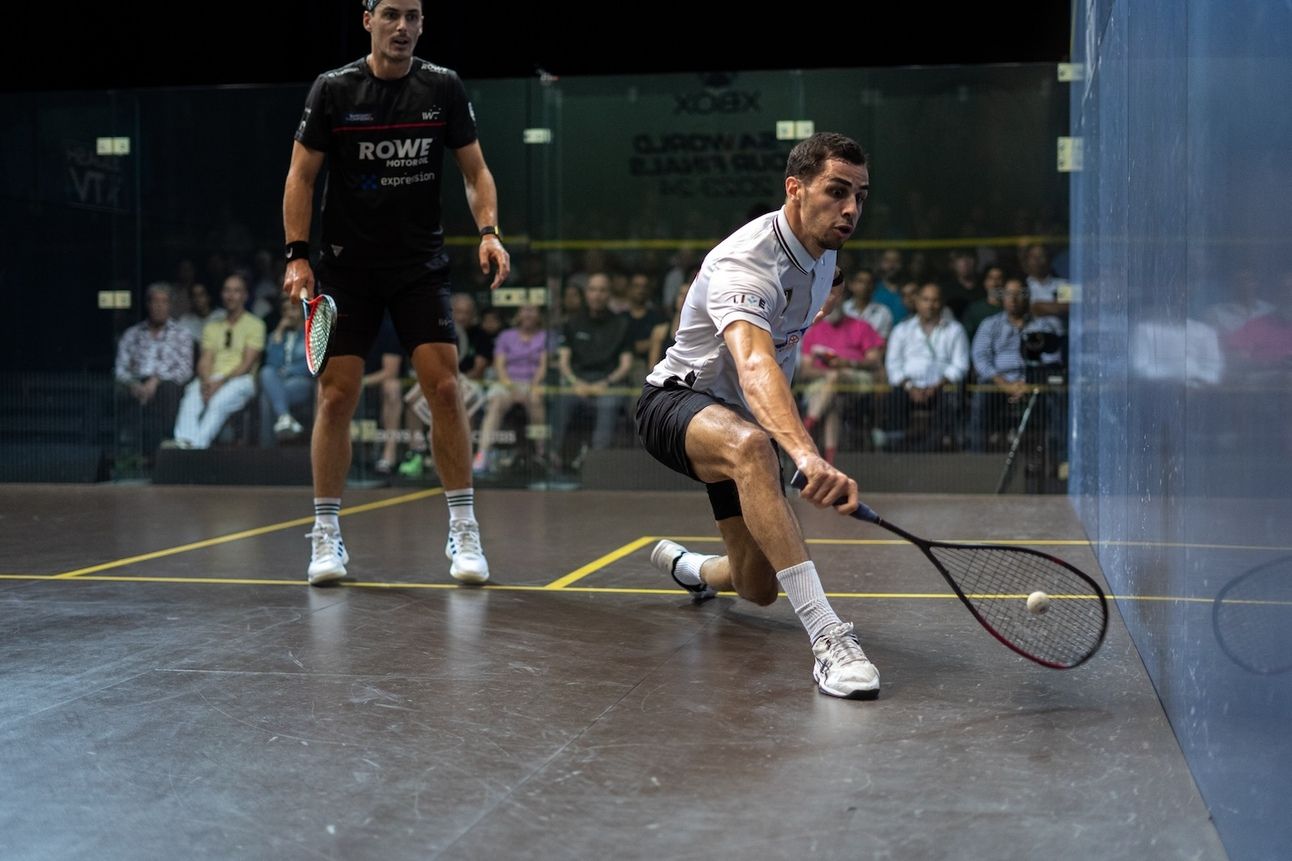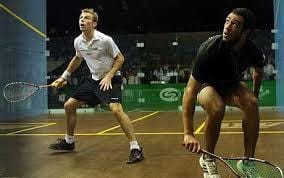- Rough Drafts about Squash
- Posts
- Get to a T!
Get to a T!
I’d like to start off by saying thank you. It has been really nice to hear the positive comments from folks. Appreciate it, everyone.
The best way you can support this writing is to share it on social media. Click the "read online" button at the top right and then click that 'v' shaped button top-left, and it'll give you sharing options for LinkedIn and Twitter. You can also share this newsletter via email with your friends, and then they can subscribe by clicking here.
Squash players spend a lot of time on fundamentals. New recreational players spend happy(?) hours of practice trying to understand grip, forearm pronation, racquet path and how they affect specific shots. After a while, they find partners who will do drills, routines, conditioned games that groove shot combinations and accuracy. And competitive players carry a veritable snowstorm of input and ideas into their matches. Sometimes they grab onto out things that work (huzzah!); sometimes the same things don’t work the next day or in the next match (merp?). The real, right, bullet-proof answers are so elusive!
Let’s face it: the better you get at this game, the more subtle it becomes and the better you have to be at interpreting what’s happening in the moment.
To T or not to T?
For example, you’re playing in the 4.5 league playoffs. Your worthy captain has brought the team out to cheer each other on. When you come off court, someone is there to give you some tips. They lean in offering a paper cup of water and tell you something about where you and your opponent are hitting the ball, how your adversary is feeling, maybe even where their weakness seems to be now. You stare at the wall. The intergame clock ticks down. And then, at the last second, as you’re standing up and looking for your eye guards, they say, “And get to the T!” You nod and step on court.
But what could that last instruction actually mean?

That’s not quite the T, is it? No, but it’s the right place to be.
Next time you’re watching professional squash, track just one player very closely for a game. Forget their swing and shots they’re hitting. Just try to see where and when they do that little jump before pushing off to the next place they’re going to hit from. If you have the answer in your head already (i.e. the “T”), then scrub it out and go watch your favorite player with these points in mind:
High level players have one priority: to reach the best possible location to retrieve the next shot, and to be there before their opponent strikes the ball. If they can do that, they can almost always stay in the rally. If they can’t, they are almost immediately under massive pressure.
The spot they choose is frequently not in the middle of the court where those two scuffed lines meet. And you can see that there’s sometimes more than one to choose from.
When their opponent starts their swing, they prepare to change direction and stop trying to get into that “best possible position to retrieve the next shot” (let’s call it, I don’t know, umm, a T). There’s just no point: they’ve gotta get ready to react and probably scramble!
The little jump ends with both feet on the ground, usually. At about the moment the ball hits the front wall. Usually.
Location, location, location
Back to the 4.5 playoff semi-finals, now in the fourth game and slowing down a little.
Everything you do is both defense and offence. Getting to a T in time gives you the best chance of getting the next shot, but it also tells your opponent you’re ready and forces them to think and execute well.
You have considerable influence over when your opponent hits their next shot. Use height and weight of shot to force them to wait and give yourself time to get into position.
Feet and racquet are neutral while you’re waiting, you’re focused on your opponent’s movement and racquet prep, and your response is primed.
When the shot comes, your first question is forehand or backhand. Your second question is forward or back. Only then do you move - trust me, you’ve got time. The court’s not that big.

Nick got caught covering the drop, but he’s also forced Ramy to use height rather than attack short.
More to come!
Thanks for reading. I hope that this provides some ideas and food for thought. I'm going to try to send these every two weeks, so you can expect another one around then, unless enlightenment breaks out, or something. Meanwhile, happy to hear your thoughts and responses via email.
Reply